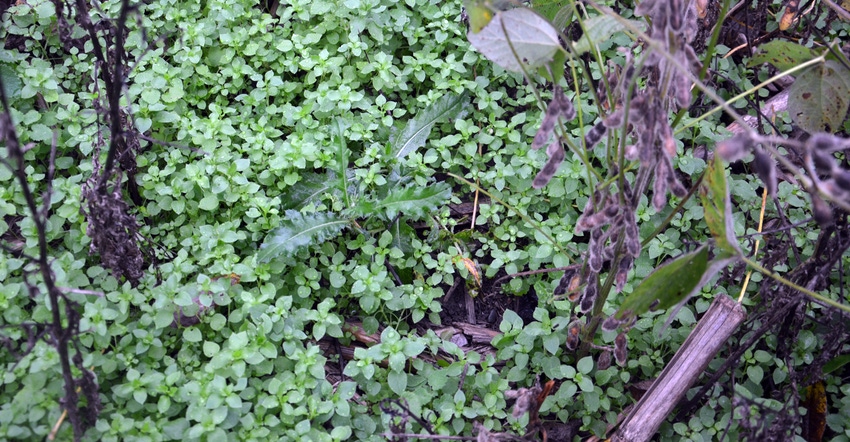
The Soybean Watch ’17 field was relatively clean this year. There were some scattered marestail plants, but top growth was generally controlled with a midseason herbicide application. Recently, Indiana Prairie Farmer has shared examples of how tough marestail can be once it gets some size, and how it can regrow and even produce seed if it’s not wiped out.
The biggest issue of note in the Soybean Watch field this season was Canada thistle, and they were spotty as well. The picture above came from one of the worst patches.
“The problem was that it stayed so wet that the farmer couldn��’t make the post[emergence] application when he wanted to,” notes Steve Gauck, Beck’s sales agronomist, Greensburg, Ind. Beck’s sponsors Soybean Watch ’17.
When he did make the application, he included herbicides that knocked out top growth on the thistles. “It was an effective application, and it really hit them hard,” Gauck says.
Continue the fight
Gauck watched one small area all year. Thistles were the thickest there, and were peeking above the crop canopy when they were finally sprayed. Here are his observations from watching this one small area.
• Once thistles get a jump on the crop, they will affect growth. Earlier this summer after spraying, Gauck pulled a soybean plant growing in the thistle patch and one growing where there were no thistles. The difference in the amount of branching and pod set was striking, he recalls. Plants tended to be spindly and have fewer branches where they competed with thistles until midseason.
• The soybean stand was thinner where there were thistles. Obviously, the competition went on long enough to affect soybean growth — and most likely yield, Gauck says.
• Winter annual weeds filled in bare spots left by dead thistles. The ground didn’t stay bare after the thistles were burned off. Green growth appeared. Ideally, soybeans would have filled out the row and occupied that space. But by the time the thistles were gone, there wasn’t enough time left for soybeans to compensate fully.
• Surprise! They came back! One young, healthy Canada thistle plant took in the bare area along with the other low-growing plants. “It’s really not surprising that there would be regrowth of thistles,” Gauck says. “They have an extensive underground root system. Even though the tops were burnt off, the root system wasn’t destroyed underneath the ground. New shoots will come up from those roots. There also could be thistles come from seed, as well.”
• There is a need to continue working on thistles. In the fall before a hard freeze is a good time to hit thistles with glyphosate and other chemicals that will work on their root system, Gauck says. This works well in the fall because as the plant sends food reserves down to its roots, the chemical goes down into the roots as well. If you miss the fall window, be ready to hit them in the spring.
The secret is to know where they are and keep working on them, Gauck says.
About the Author(s)
You May Also Like




